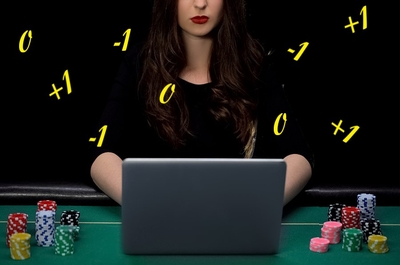 People who know little about casinos might logically assume that there are no games where the house can be beaten. After all, if there is a system, technique or method that can be used to get the better of casinos, how can they still exist and why are the ones in Vegas, Macau and other casino towns so darn glitzy?
People who know little about casinos might logically assume that there are no games where the house can be beaten. After all, if there is a system, technique or method that can be used to get the better of casinos, how can they still exist and why are the ones in Vegas, Macau and other casino towns so darn glitzy?
Well, believe it or not, in this specific case such logic is wrong: there is a way to stack the odds in your favour in the casino. Card counting has been around for a long time but was really brought to the attention of the masses in films like 21 and books such as Ben Mezrich’s Bringing Down the House (on which the film was largely based).
Even prior to those additions to popular culture, many books had been written about card counting. US mathematician Edward O. Thorp is largely considered to have written the first tome about the subject, Beat the Dealer, which was published in 1962. Essentially this expounded upon optimal strategy, the best way to play any given hand and how, along with counting cards, this could be used to – as the title says – beat the dealer.
What Is Card Counting?
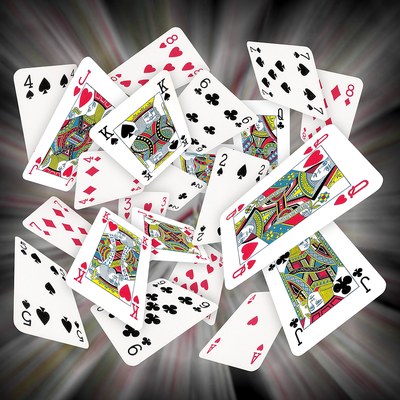 The focus of this piece is card counting online so we will not go into too much detail about the subject more generally. However, if you are entirely unfamiliar with the concept, let us explain the basics. They key thing that underpins card counting is that, unlike most games in Vegas, in blackjack, what has happened in the past has an influence on what happens next.
The focus of this piece is card counting online so we will not go into too much detail about the subject more generally. However, if you are entirely unfamiliar with the concept, let us explain the basics. They key thing that underpins card counting is that, unlike most games in Vegas, in blackjack, what has happened in the past has an influence on what happens next.
In roulette, if one spin lands on red, the odds of the next spin being red (or black, or zero) do not change. If red hit five times in a row, it is still approximately 50/50 (18/37 to be exact) that the next will be red. Each spin is an independent event and so players can gain nothing from analysing previous ones.
In contrast, the next card to come out of a deck of cards is not an independent event because the pack is now one card smaller. To keep this simple, let us assume a single-deck game is being played by three players against the dealer. If the first two players are dealt an ace as their first card, so the chances of the next player getting an ace have dropped substantially, because there are only two left in the deck.
There are just four per deck so if two have already been dealt, we know that the next player has a one in 25 chance of being dealt an ace. This is because there are 50 cards left (two have been dealt) and only two aces, to we divide 50 by 2 to get 25. In contrast the first player, prior to the deal, had a one in 13 chance, because we would divide the full pack of 52 cards by 4 (four aces) to get 13.
In slightly more complex terms, Thorp and many of the other great theorists and mathematicians of the game have proven that a shoe with lots of high cards remaining is beneficial to the player. In contrast, one with lots of low cards favours the dealer. An abundance of high cards makes a 3:2 natural more likely and increases the chances of the dealer going bust too. It also makes doubling more likely to yield a net win and at times can make taking insurance a player-favourable decision too.
There are many slightly different ways to count cards, some yielding better results but being more complex/harder to carry out than others. Perhaps the most basic is the high low method, which considers 10, jack, queen, king and ace as negative with a score of -1; cards seven, eight and nine as neutral with a count of 0; and numbers two to six inclusive as positive with a count of +1. The player starts at 0 then adds and subtracts from the count as each card is dealt to get an understanding of when the shoe is stacked with more high value cards.
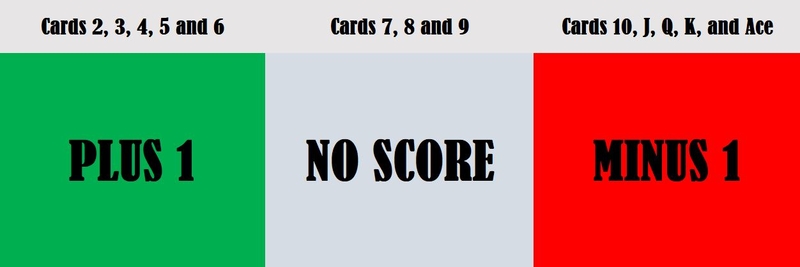
Used in conjunction with basic strategy and staking plans that alter the player’s wager according to the status of the deck, counting cards can be hugely lucrative for a skilled player. When the shoe is deemed to be favourable, the player will increase their stake (or in card counting teams, surreptitiously signal for another player to join the table and make large bets). When it is stacked with low cards, and so unlikely to deliver net wins, they will reduce their bets or covertly instruct the accomplice to leave.
The house edge on blackjack is low and can often be less than 1% depending on the rules of the variant being played. A player using basic strategy will obtain the lowest possible edge, and when the benefits of card counting are included they can create enough of a positive expectation to make counting highly lucrative, albeit that players and teams need to put in considerable time, effort and energy to their endeavours. Lest you doubt that card counting can pay, the famous MIT blackjack team is reported to have made around $50m!
Naturally, casinos employ various counter-measures to try and stop card counting, which is often easy to spot due to the erratic nature of a player’s stakes, their demeanour at the table or even the fact that they consistently win. Card counting is legal as long as no devices are used to interfere with the game, although it will be against the rules of the casino. Ultimately, the casino holds the right to no longer accept a card counter’s business.
Card Counting Online
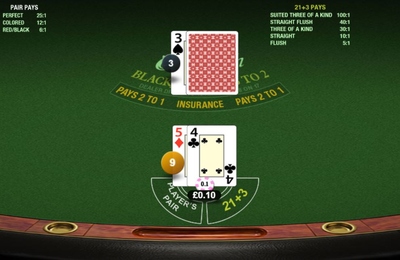 Now you understand what counting cards is all about, many players who prefer to play their blackjack from the comfort of their homes will probably be wondering whether or not it is possible to cash in with this technique online. When it comes to counting cards at an online casino, things are very different.
Now you understand what counting cards is all about, many players who prefer to play their blackjack from the comfort of their homes will probably be wondering whether or not it is possible to cash in with this technique online. When it comes to counting cards at an online casino, things are very different.
Whilst it may be easier for a player at home to maintain an accurate count, it is also far easier for the casino’s technology and algorithms to detect irregular staking patterns. This means they could very rapidly limit your stakes or close your account.
However, they don’t need to because online casinos use continuous shuffling technology. In the real world this is more difficult, but a continuous shuffling machine (CSM) does exist which takes cards that have been played and returns them to the shoe before automatically shuffling them back into the deck. This means that the count can never become positive or negative because all cards apart from the ones on the table are live and in play.
As such, each hand is essentially an independent event. Whilst the player going last at a large table can gain a very minor advantage from time to time, this is nowhere near enough to beat the house edge. Traditional online blackjack does not need a machine of course, as real cards are not used, but effectively the random number generator (RNG) that powers “normal” online blackjack simulates the use of a CSM, randomly selecting the cards for a new hand from the entire deck (usually multiple decks), as opposed to selections from the cards not used in the previous hands.
Card Counting Online At Live Casino
Whilst card counting at an RNG blackjack table is all-but impossible, or certainly not a worthwhile venture, are things any different at a live casino? After all, these use real dealers, real cards and by and large recreate the game as it would be found in a real-world casino.
Whilst CSMs are sometimes used in casinos in the real world, many establishments do not use them, partly as players tend to dislike them, partly due to cost (they are expensive) and perhaps also a little down to tradition. In terms of their use at online live dealer casinos, it varies but is not widespread.
You can tell if a CSM is in use because the dealer will simply return used cards into the machine from which new ones are taken, so it is obvious that a CSM is being utilised and card counting is not possible.
So Card Counting Is Possible Online At A Live Casino?
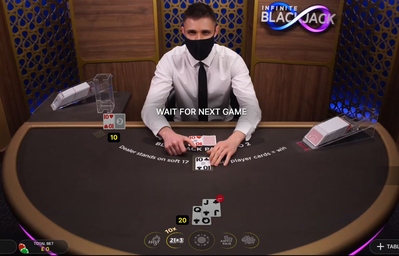 Casinos are well aware that their live tables are potential vulnerabilities. Counters at home can use software, or even just an old-fashioned pencil and paper, to easily keep the count, figure out the optimal strategy and calculate their staking plan. Their body language and demeanour cannot be observed so neither the dealer nor any other observers can gain any idea about whether players are counting.
Casinos are well aware that their live tables are potential vulnerabilities. Counters at home can use software, or even just an old-fashioned pencil and paper, to easily keep the count, figure out the optimal strategy and calculate their staking plan. Their body language and demeanour cannot be observed so neither the dealer nor any other observers can gain any idea about whether players are counting.
The easiest way for casinos to deter counters is by shuffling the deck regularly. If you are sitting at a table using six decks and the count after the very first hand is positive, that information is less valuable than a positive count of the same level towards the end of the shoe. Whilst the counts are the same, the ratio of high to low cards is better the further into the shoe we go.
This is called deck penetration and is key to counting cards. The greater the deck penetration, the bigger the advantage the player can gain, because there are fewer other cards to contend with. Even with perfect strategy and the best card counting in the world, luck can still play a part and the more low cards that remain in the deck, the less advantageous the situation, even though the count may be positive.
Quite simply, many casinos, both live and in Vegas or at your local favourite, do not allow the deck penetration to reach a level where counters could garner too much benefit. As a general rule, deck penetration of 65% and above is where counting becomes especially lucrative. The vast majority of live dealer online blackjack casinos do not allow the penetration to reach more than 50% before shuffling or swapping shoes. Many do not even allow it to reach 50%.
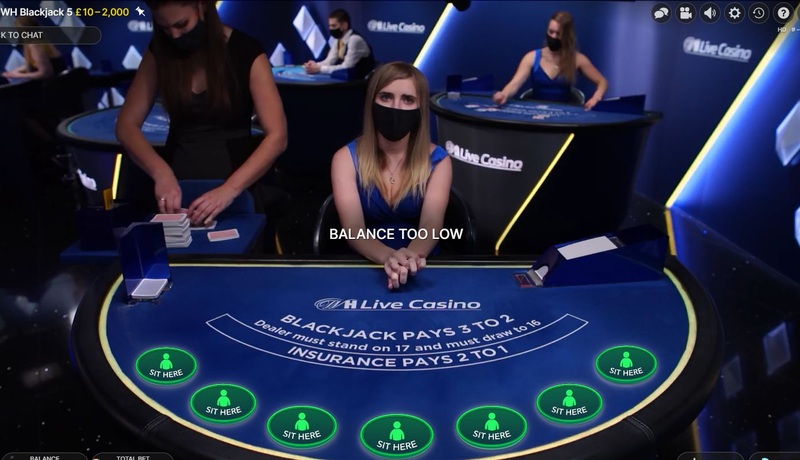
Card counting can indeed be lucrative with around 50% penetration but it is a slog. What’s more, live dealer casinos are a little slower paced than real tables due to latency (and much slower than RNG games). This means fewer hands per hour (HPH) and given the margins with card counting are slim at the best of times, a high HPH rate is essential to make things worthwhile.
Obviously getting through lots of hands as quickly as possible is even more important the lower the deck penetration. In general the casino is keen to keep the HPH rate as quick as possible. By “in general” we mean when they have the edge and the positive expected value is with the house. This is why they do not like to (manually) shuffle any more than is necessary as it slows things down considerably.
Every minute spent shuffling is as minute not spent with a table full of losing punters. This is why they do not shuffle more regularly but they do have the option to do so if they suspect counters are playing. Equally, if you are one of several players at a table and the others are playing well below optimal strategy and making a lot of money for the house, you may find the dealer allows greater penetration as what they lose to you (counting cards) is more than made up for by the others.
Conclusion
Counting cards is one of the only legal ways to beat the house and is genuinely a “system” that works so long as the house rules don’t cause you any issues. In bricks and mortar casinos it takes a fair amount of skill and a lot of commitment to make it worthwhile but it can be done and can be highly lucrative.
Those who play their blackjack online should avoid the “normal” tables that use computer graphics powered by RNGs. Continuous shuffling means counting cards is not viable. As for live dealer blackjack online, in theory, counting can potentially yield a net win. Whilst deck penetration is typically low, it is just about good enough to allow for small net wins to be made, especially alongside more advanced techniques which are not typically possible in real casinos (these include observing hands without betting and varying stakes more widely).
